![]()
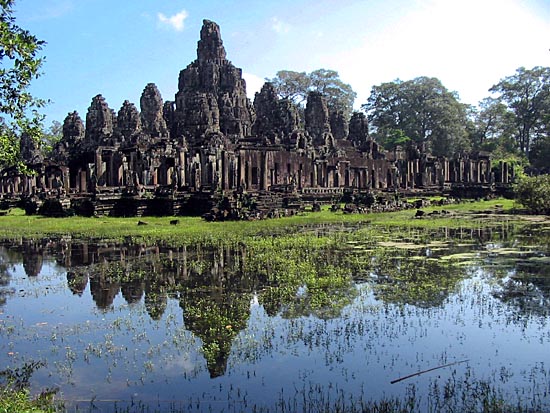
Reflections
To be seen only during the wet season, the moat around the Bayon casts a stunning reflection of this majestic temple. Standing in the exact geographical centre of the city of Angkor Thom, the Bayon is a Buddhist temple built by Jayavarman VII in the late 12th century.

Grand Entrance
The main entrance is from the east, with a raised platform leading to the outer gallery.

Outer Windows
The Bayon was built nearly 100 years after Angkor Wat. Jayavarman VII's goal was to rebuild the capital and to bring to the kingdom a new vibrancy, signifying a bright future for the Khmers.

Ancient Tales
The outer (or first) gallery depicts wonderful scenes of daily life... markets, fishing, festivals with cockfights and jugglers... and of historical scenes with battles and processions.
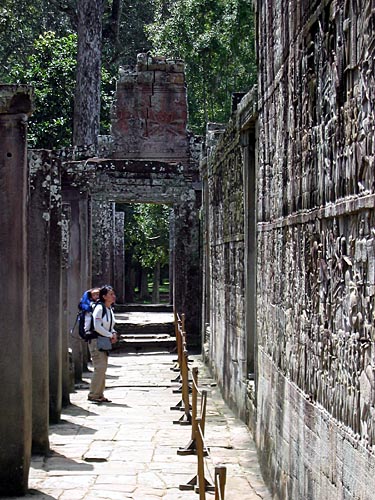
Detailed Study
The bas-reliefs of the Bayon are more deeply carved than that at Angkor Wat. The scenes are presented mostly in two or three horizontal panels, the lower one shows the foreground, whereas the upper tier present scenes of the horizon.
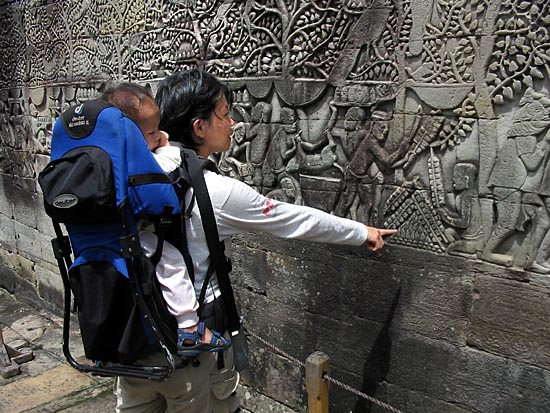
Ancient Kitchen
This outer gallery was probably open to all worshippers, whereas the other inner areas of the temple would have been restricted to priests and the king.
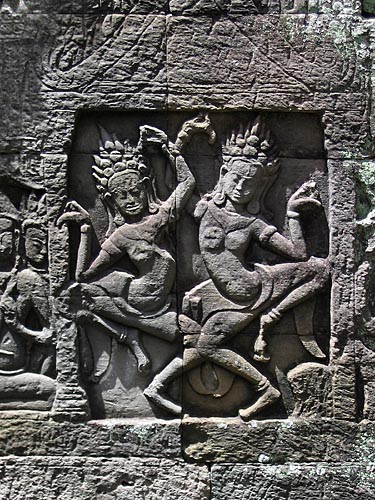
Apsaras
The decoration on the pillars have unique motif comprising two or three apsaras dancing gracefully.
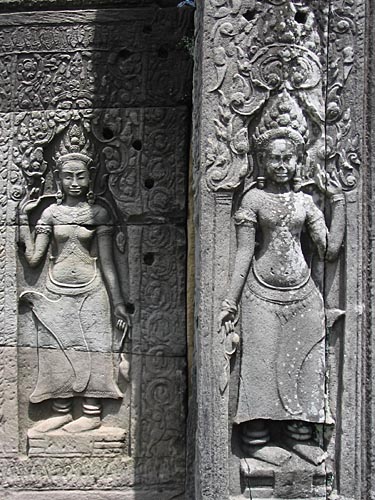
Demure
Of demure goddesses, standing in grace and harmony.

Frames
The multitude of narrow corridors and dark atriums makes an interesting and mysterious place to explore.
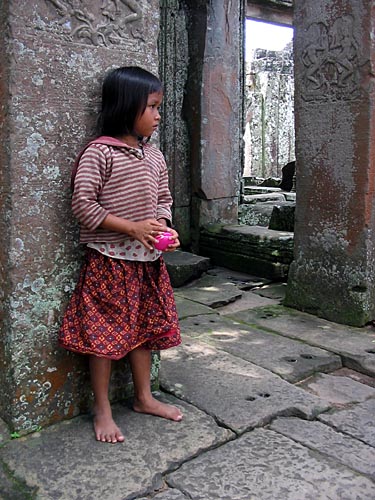
Girl
The Bayon vies with Angkor Wat as the favorite monument among visitors. The two temples evoke similar aesthetic responses yet are so different in purpose, design, architecture and decoration.
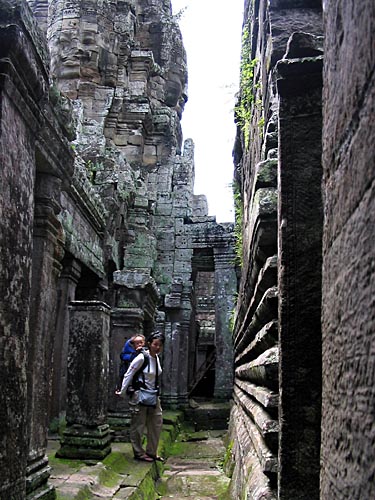
Middle Sanctuary
The galleries in the second level are separated by rooms and cells. The bas relief here depict mythological subjects of Hindu inspiration.
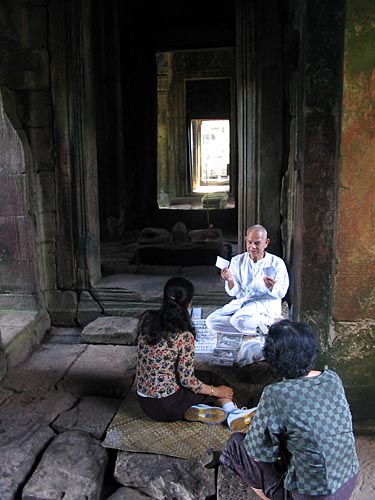
Soothsayer
Fortune tellers and nuns share the sheltered inner corridors... money is the main incentive for their presence.
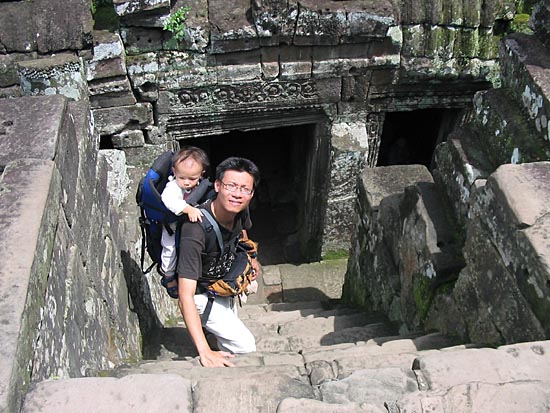
Labyrinth
The Bayon is a mystical place of stooped corridors, precipitous flights of stairs, and a collection of 54 gothic towers decorated with over 200 smiling, gargantuan faces.
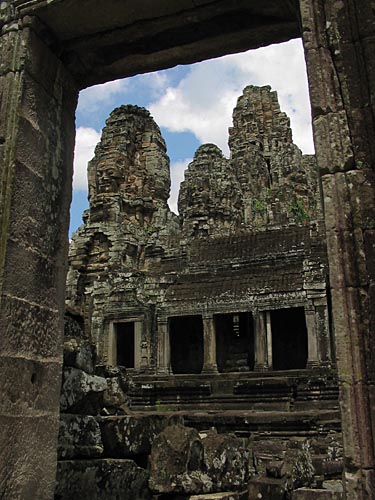
The Door Beyond
The basic structure of the Bayon is a simple one of three levels, which corresponds to three distinct phases of building. The first two levels are square and adorned with bas-reliefs. They lead up to a third circular level, where the the architectural climax is to be found.
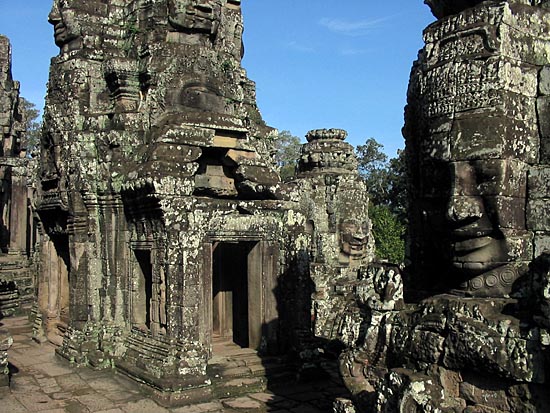
Highest Level
Unlike Angkor Wat which looks impressive both close up and from a distance, the Bayon looks like a muddle of rocks from a distance. It's only when one enters the temple and making one's way up to the third level that its magic appears.

Sitting Pretty
Chaperoning the visitors are many of these "security guards", checking for pass validity and preventing vandalism.
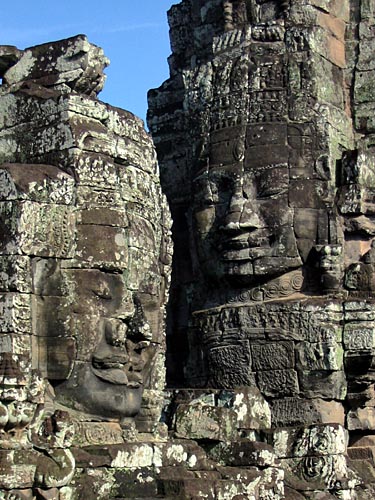
A Broken Nose
As one walks around the upper level, a dozen or more of the visages are visible at any one time... either in full face or in profile, almost level with one's eyes or peering down from on high.
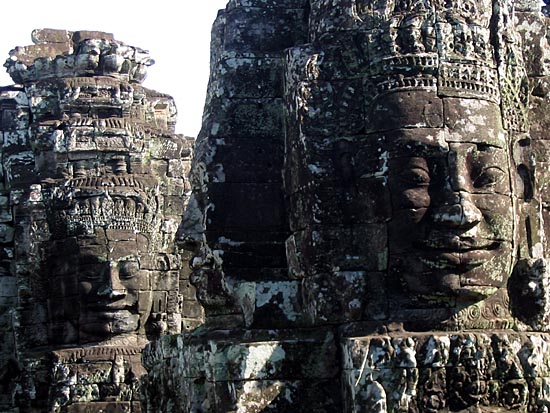
Smiles
Over 200 large faces carved on the 54 towers give this temple its majestic character. It is these faces that have such appeal to visitors and reflect the famous "smile of Angkor"
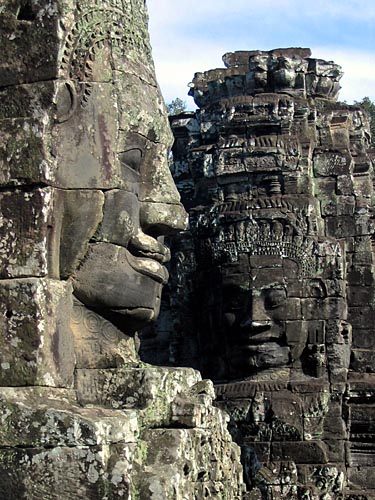
Enigmatic
"The faces with slightly curving lips, eyes placed in shadow by the lowered lids utter not a word and yet force you to guess much"
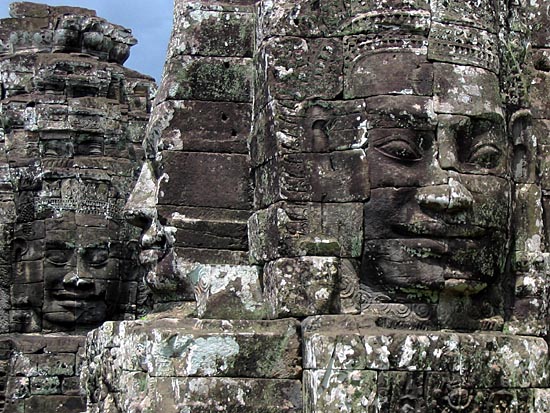
Placid
The Khmer empire was divided into 54 provinces at the time of Bayon's construction, hence the all seeing eyes of Avalokiteshvara could have been intended to keep watch on the kingdom's far-flung subjects.
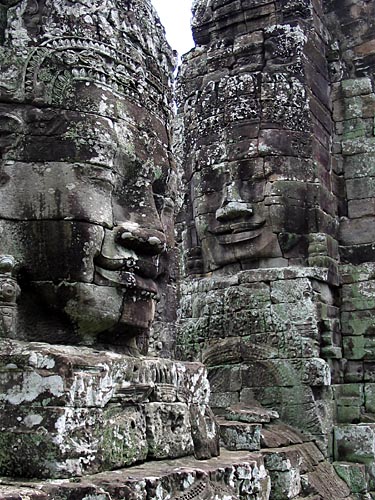
Luscious
The iconography of the four faces has been widely debated by scholars. Although most think they represent the Bodhisattva Avalokiteshvara, in keeping with the Buddhist character of the temple, others think the four faces on each of the towers are images of King Jayarvarman VII and thus signifying the omnipresence of the king.
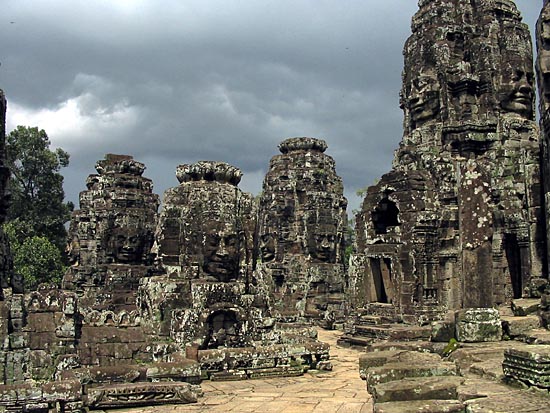
A Special Place
The shifting light as the sun moves about the faces produces new shadows and highlights. The multitude of faces at different levels affords endless fascination.
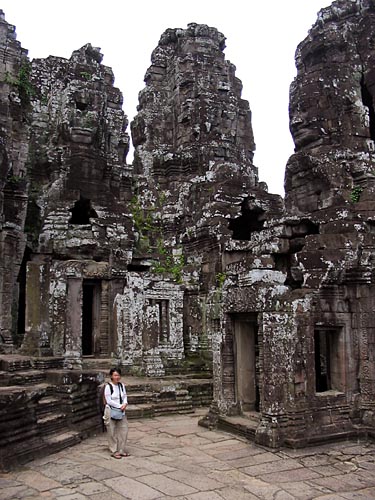
Inner Sanctum
The central circular mass is a shape that is uncommon in Khmer art. Originally there were eight shrines which were later increased to 16. The faces on the four sides of the eight towers marking the cardinal directions are exceptionally dramatic depictions. The interior of the central sanctuary is a cell surrounded by a narrow passage.
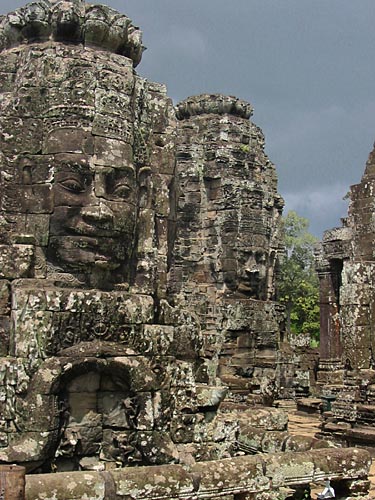
Monuments
"Godliness in the majesty and the size; mystery in the expression"
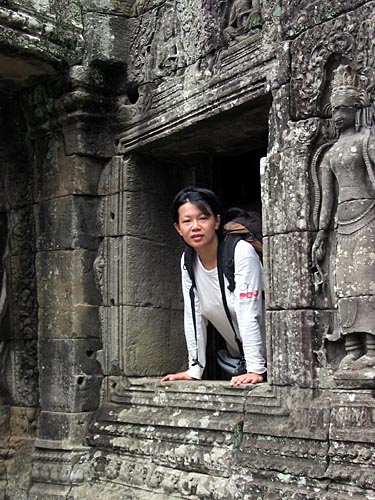
Windows
Every corner, every room offers opportunity for bewilderment and excitement.

Giant Zig Zaw
Like a giant zig zaw puzzle, many pieces of collapsed walls with reliefs, mixed up and staced into piles awaiting the puzzle to be solved... one day.
![]()